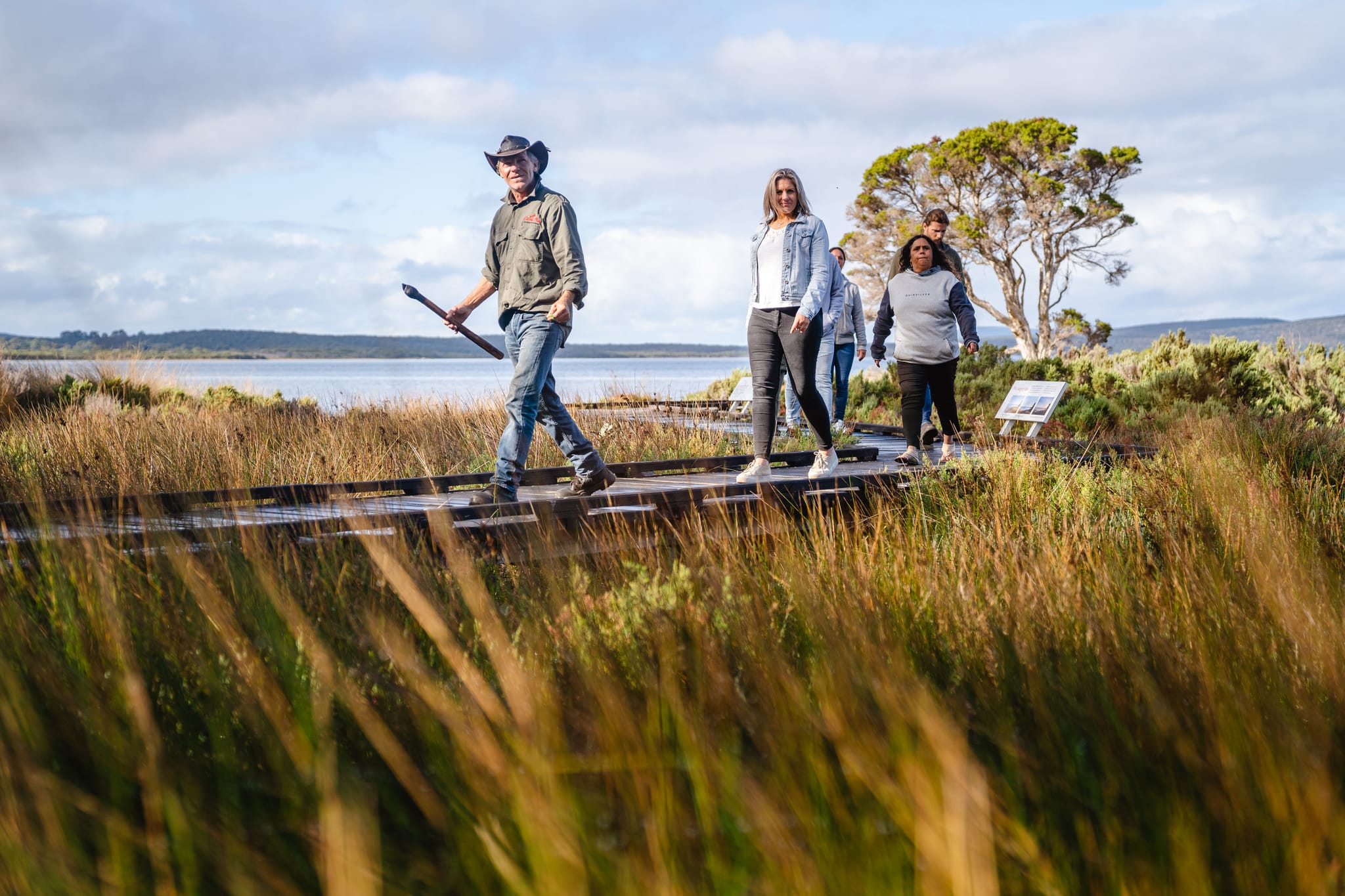
✍🏽 By Tori Wilson
Take the time to learn from First Nations people, starting with these enriching cultural experiences.
In the Southern part of Noongar Boodja, the culture of First Nations People is strong. With so many Aboriginal people willing to share their stories, the opportunity is ripe to learn about the ancient ways and continued traditions of the Ganeang, Goreng and Menang people. You’ll walk away feeling inspired by their wisdom of the land and deep connection to Country.
Kurrah Mia – Kinjarling (Albany)

Menang Elder Vernice Gillies of Kurrah Mia is a passionate educator, committed to the preservation of her peoples’ knowledge and traditions. “It’s paramount to learn that our stories still live on,” says Vernice, who welcomes visitors to Kinjarling (Albany) to join herself, or her son Larry, on one of their insightful tours on Menang Boodja (country).
“Indigenous history, heritage, laws, rights and knowledge; we want people to know. We want people to go out there and know exactly what fruits you can eat. We want people to know about bush medicine.”
Learn about Indigenous practices from Vernice and Larry as they take visitors out to experience the land. Taste a mearn plant (a native bloodroot), discover the various uses for yool (paperbark), appreciate the science behind the crafting of a boomerang, and learn how First Nations peoples once lived on the land you stand upon while gazing out across breathtaking landscapes.
With so much knowledge to share, Vernice says she’s most passionate about hosting the Fish Traps Tour, where she takes guests out to Oyster Harbour and reveals the story behind 7,500 – to 10,000-year-old site.
“There is so much happening in this city, we’ve become a very forward moving city in terms of Aboriginal things,” says Vernice.
Kodja Place – Kojonup

For thousands of years, prior to the arrival of European settlers, the First Nations People of Kojonup frank from the local freshwater spring and hunted using the traditional Noongar ‘kodj’, or stone axe – from which the area, and The Kodja Place derives its name.
The Kodja Place is a harmonious blend of Kojonup’s cultures; purpose-built to tell the stories of its First Nations people, alongside settler history. The welcoming space begins with an opening gallery piece, representative of the six Noongar seasons and footprints of the koomal (possum), yonga (kangaroo), and waitch (emu) enticing visitors to follow and discover more. Aboriginal artefacts – such as a collection of three spears – bush food displays, photos, interactive displays and written stories paint a vivid picture of Kojonup’s history. While much of this is a confronting acknowledgement of past injustices to Aboriginal people, it also applies a positive lens to reconciliation.
The best way to experience Kodja Place is on a tour with local Geneang Elder Billy Riley, who first began working at the centre alongside his uncle Jack Cox, who passed in 2021. A commemorative sign acknowledges Jack’s involvement as the centre’s first guide, stating “The Kodja Place Community honours the extraordinary contribution made by this legendary storyteller with the cheeky smile and big laugh.”
On his tour, Billy shares stories of his Uncle Jack, as well as his own upbringing living in a small hut on the outskirts of town, where two beds were shared between six people; at a time when a 6pm town curfew was mandatory for all Aboriginal people.
Billy brings his guests together to join him at the yarning circle, a place to bring people together to talk about life. “We have to get our culture out there,” says Billy.
Walkabout Consultancy – Koi Kyeunu-ruff (Stirling Range)

An ancient landform, Koi Kyenunu-ruff (Stirling Range), stretches for 65 kilometres and erupts from the earth to 1,059 metres at its tallest peak – Bular Mial, or Bluff Knoll, meaning place of many eyes in the local Noongar dialect. It’s truly an awe-inspiring sight to behold, especially when in the presence of local Elder Ezzard Flowers.
With Goreng, Menang and Wadjury kinship, Ezzard knows the mountains and its traditional creation stories intimately. This is a sacred site for Noongar people and one to be respected. Deepen your understanding of Ezzard’s ancient and continued culture through his sharing of stories and songlines and develop a connection to Country as you walk the land – taking in its sights, smells, sounds and lessons.
Gnowangerup Heritage Museum – Ngowanjerindji (Gnowangerup)

The Gnowangerup Heritage Museum is the culmination of the efforts of many seeking a shared space to celebrate the history of the local Noongar people. Housed in a heritage-listed building constructed in 1913 as a home for Baptist pastor Reverend Edward Clugston, the museum represents the local Noongar heritage, culture and community through its collection of photographs, stories and displays.
Beginning in the font garden, photographs showcase the histories of people living in the district, including Noongar people housed on the Gnowangerup Mission. Inside, the exhibition space has been skilfully designed using raw, makeshift building materials, reflective of the original mission to amplify the stories told on its walls through historic records, both written and visual.
